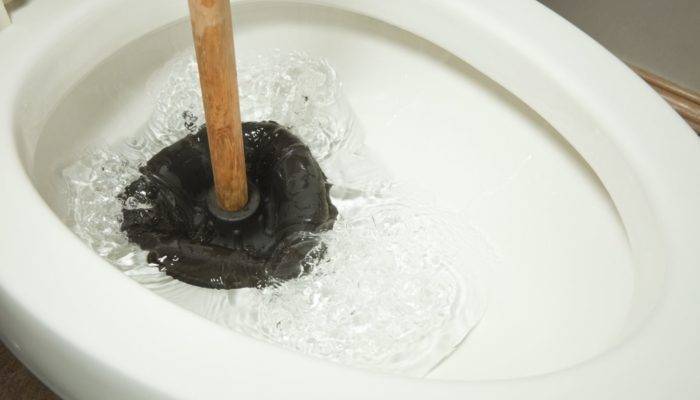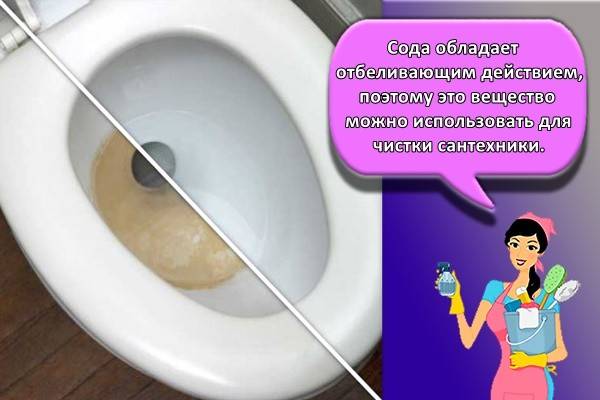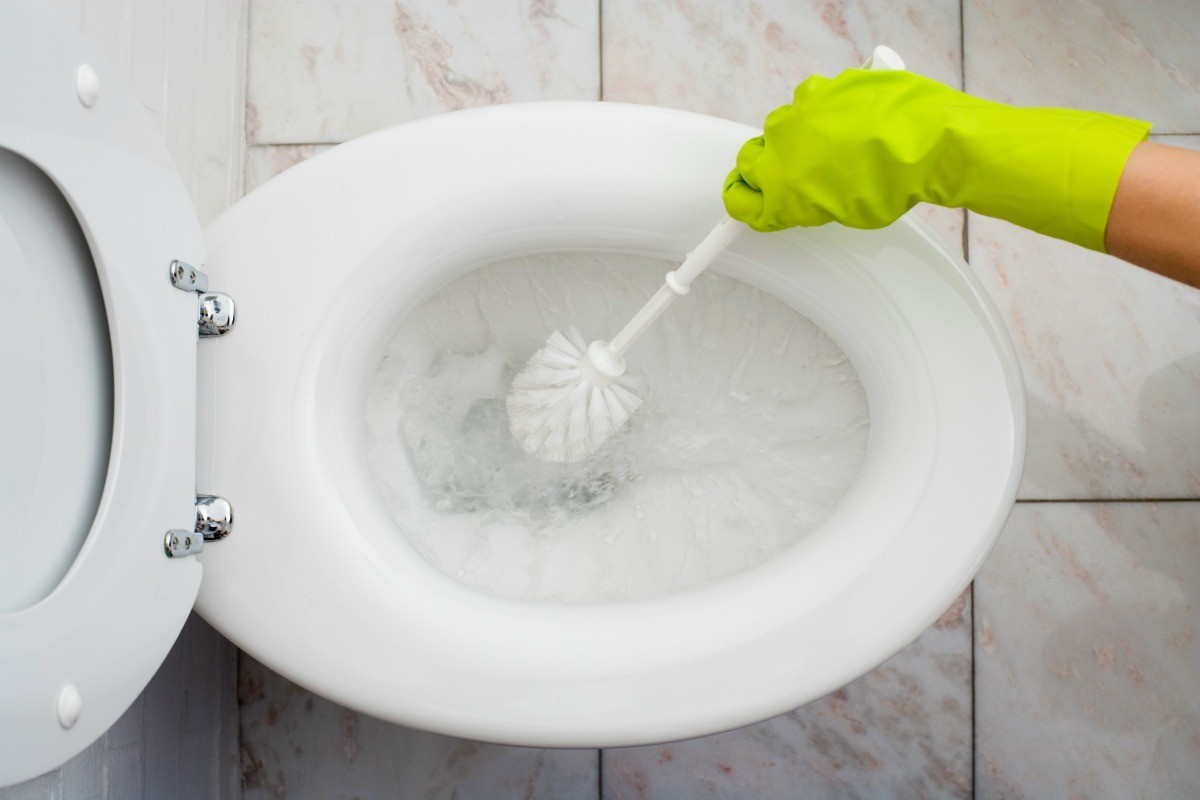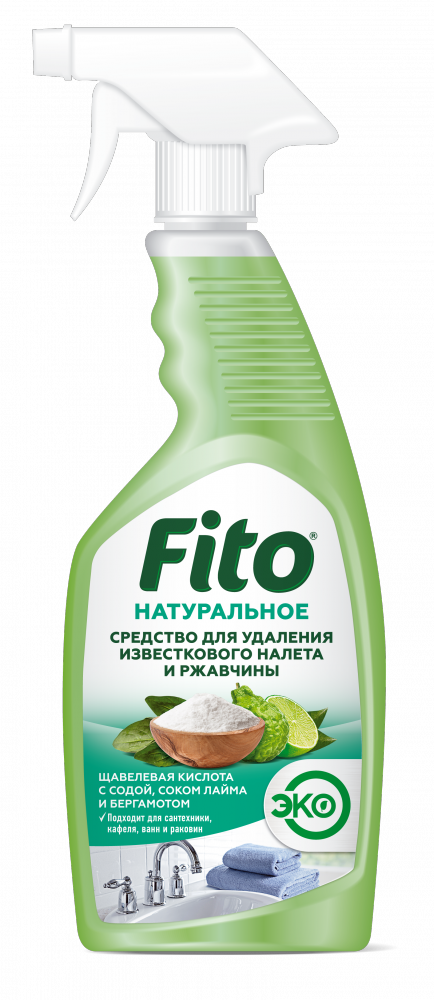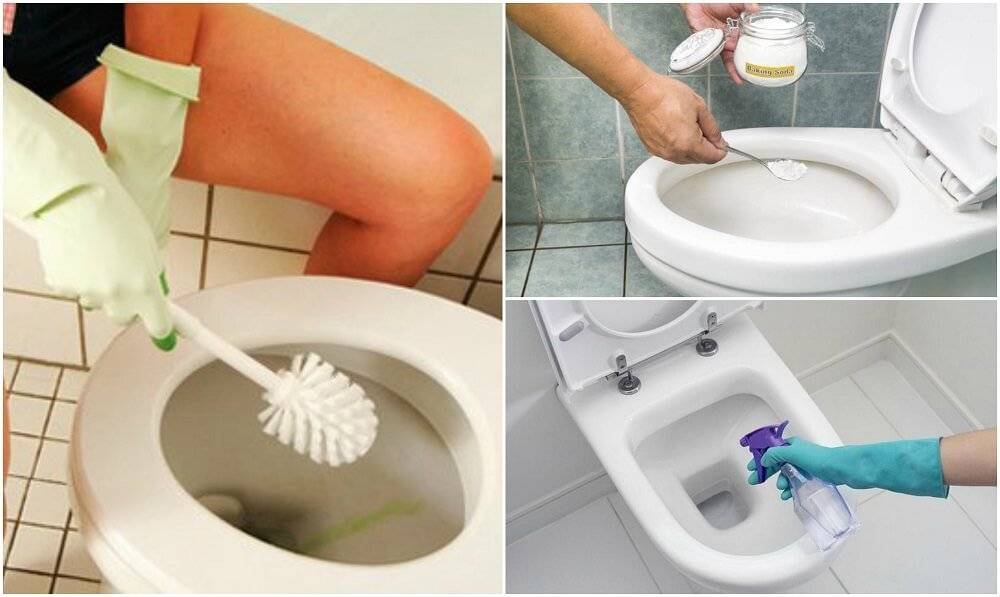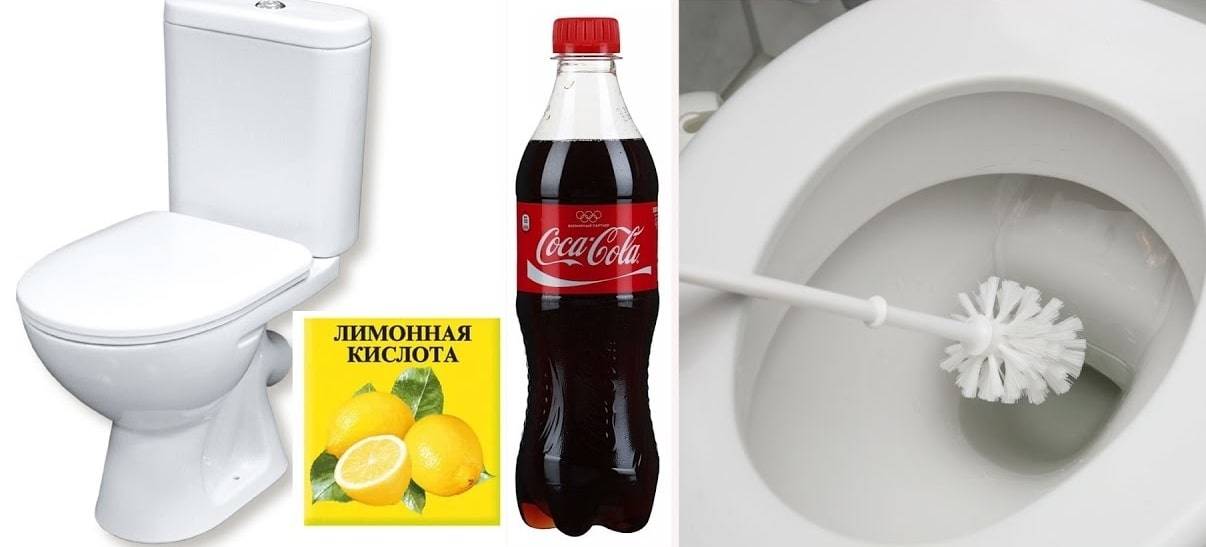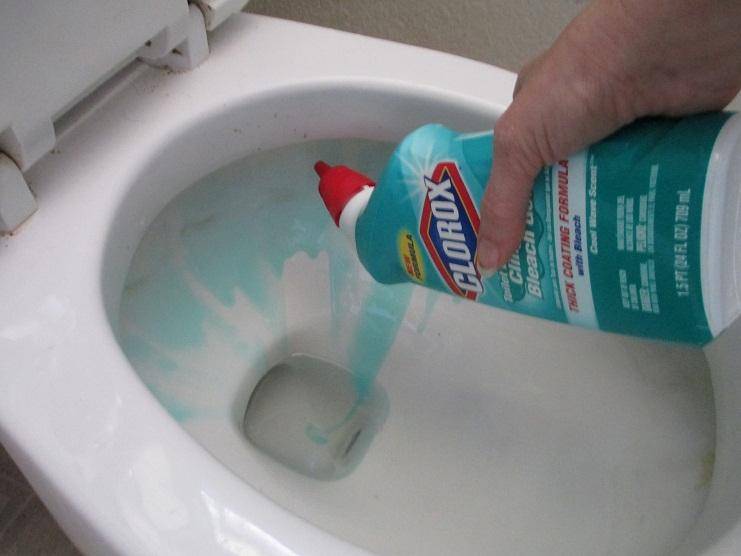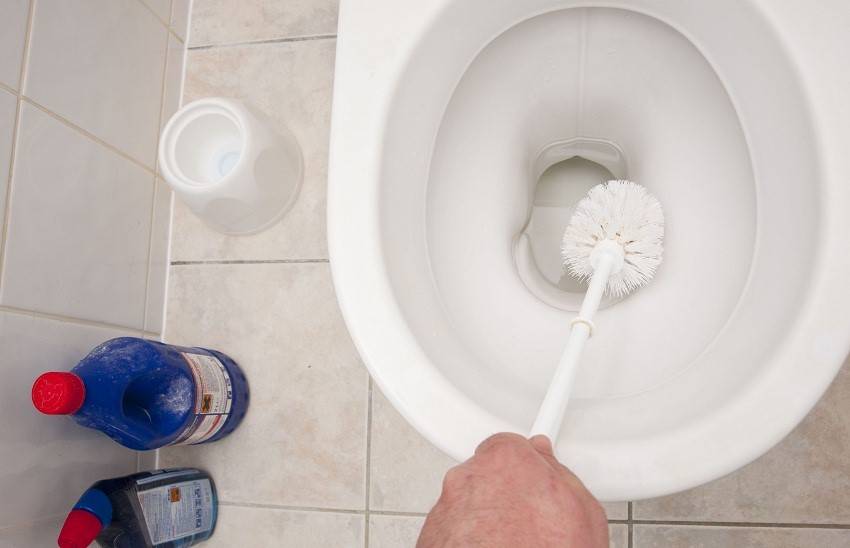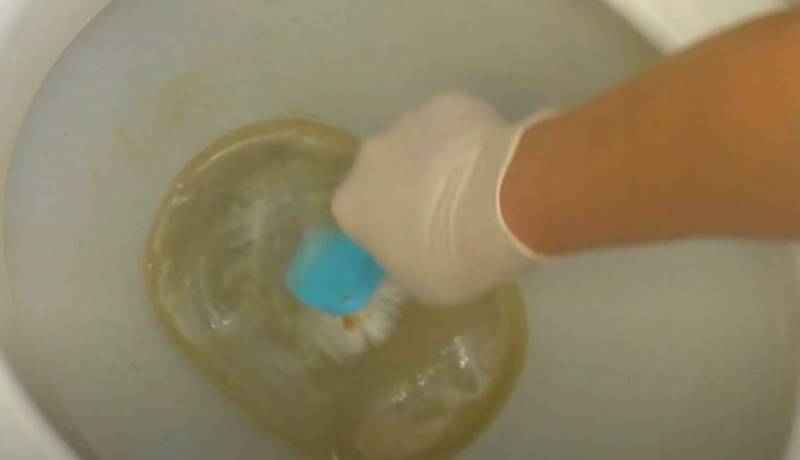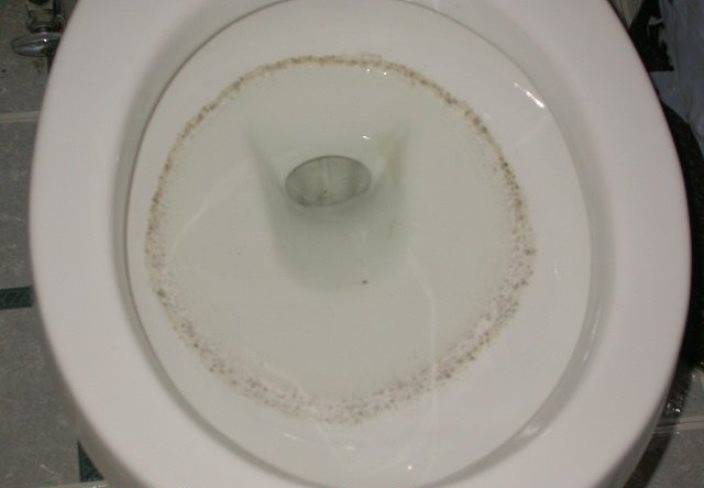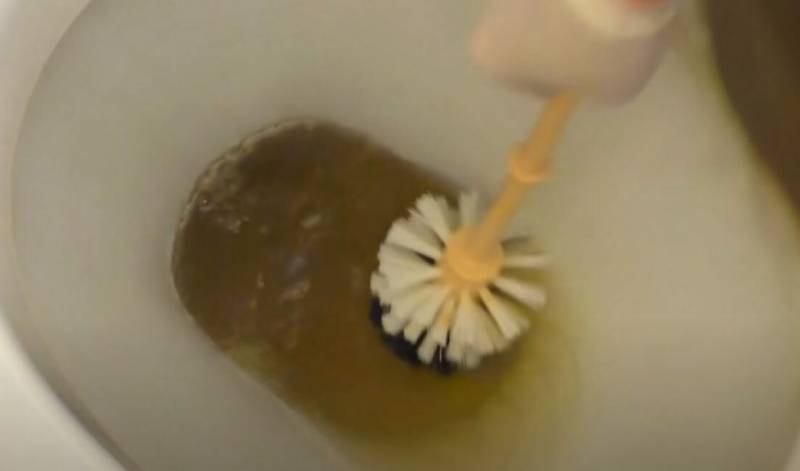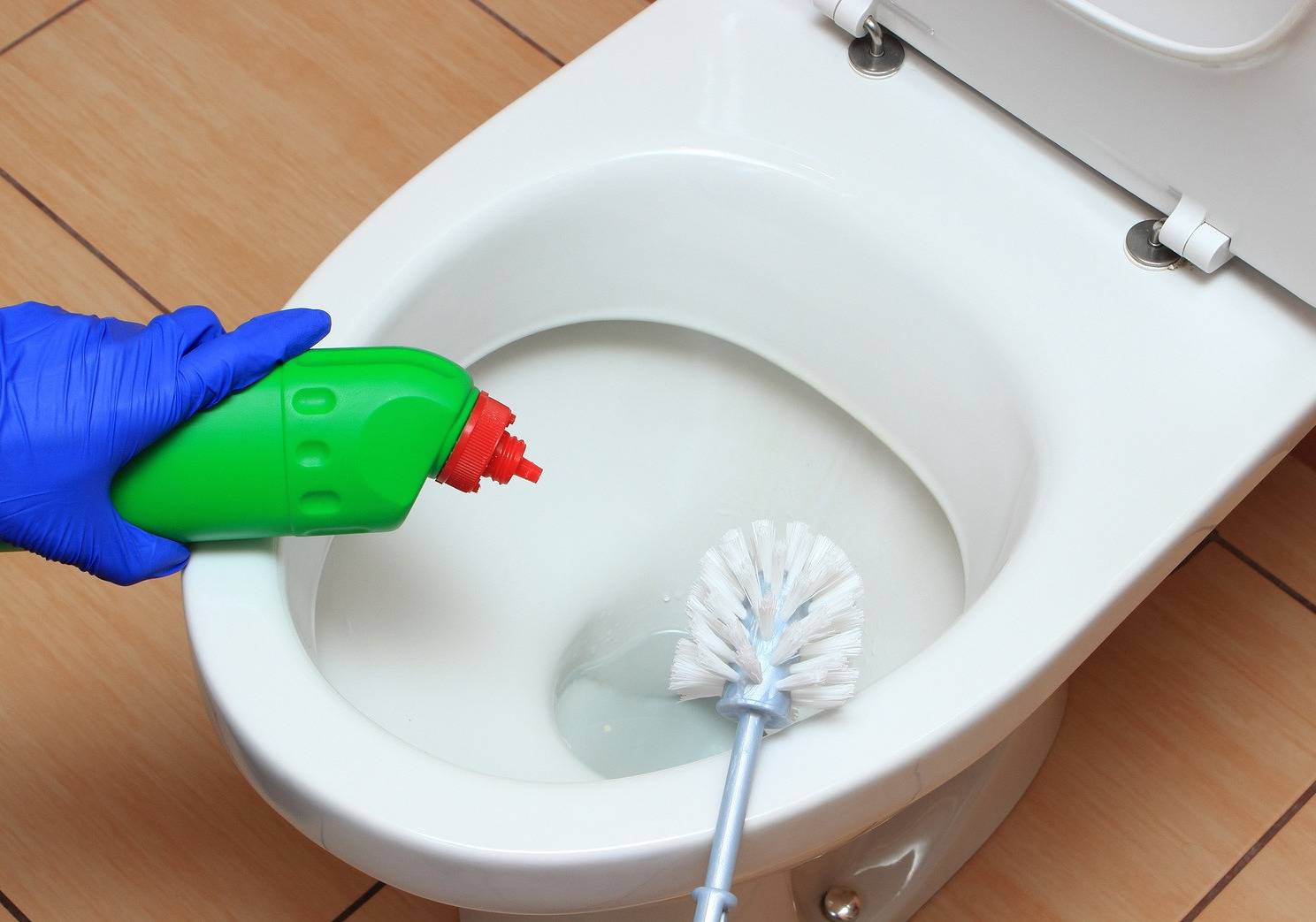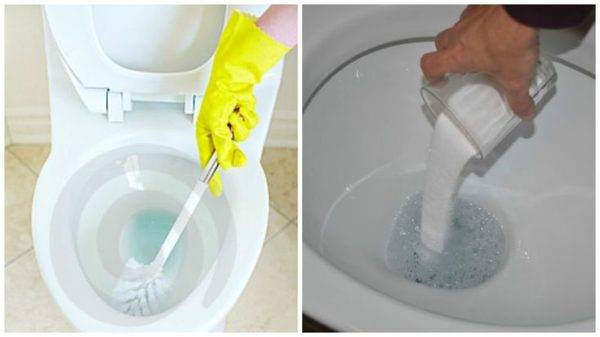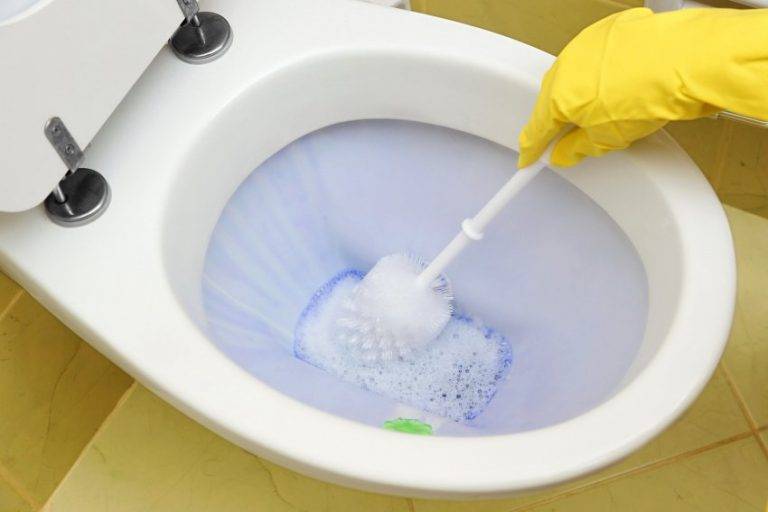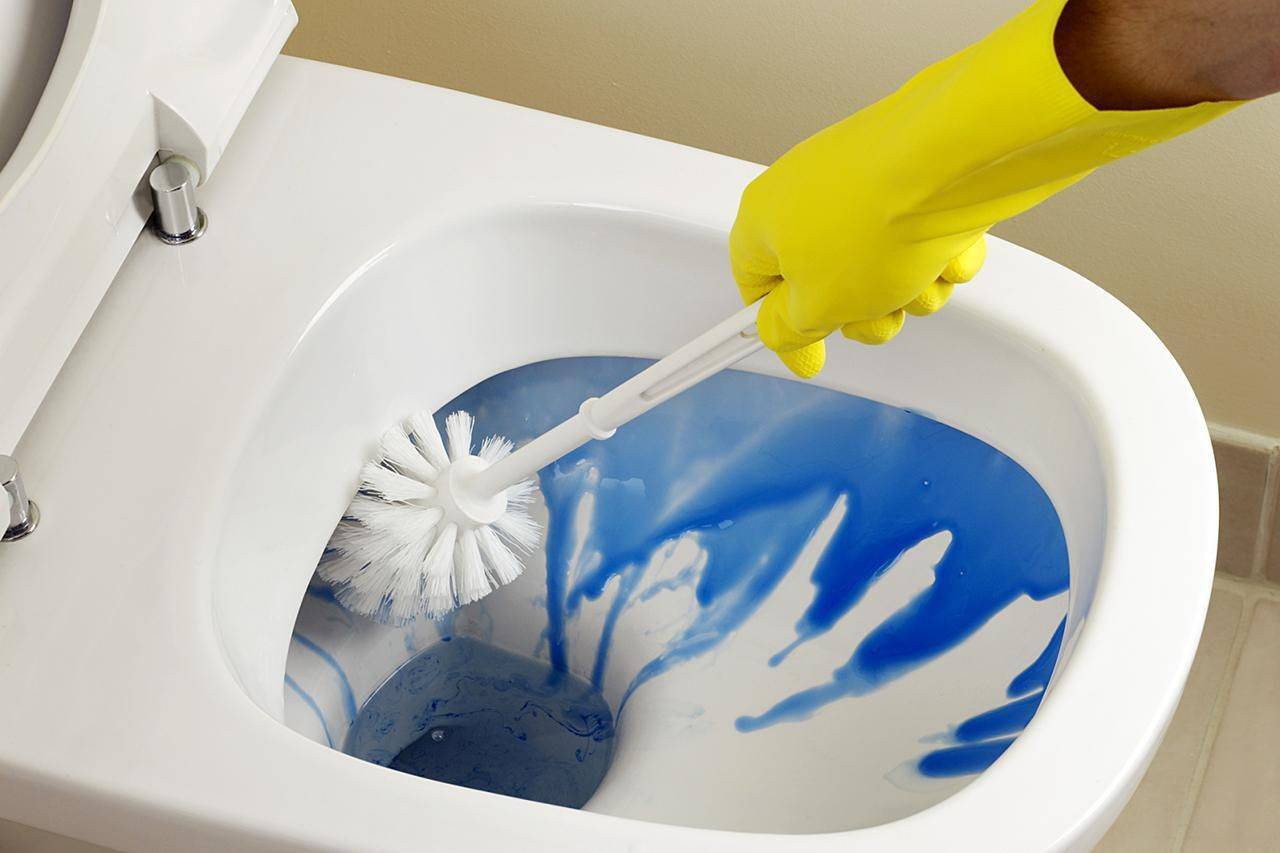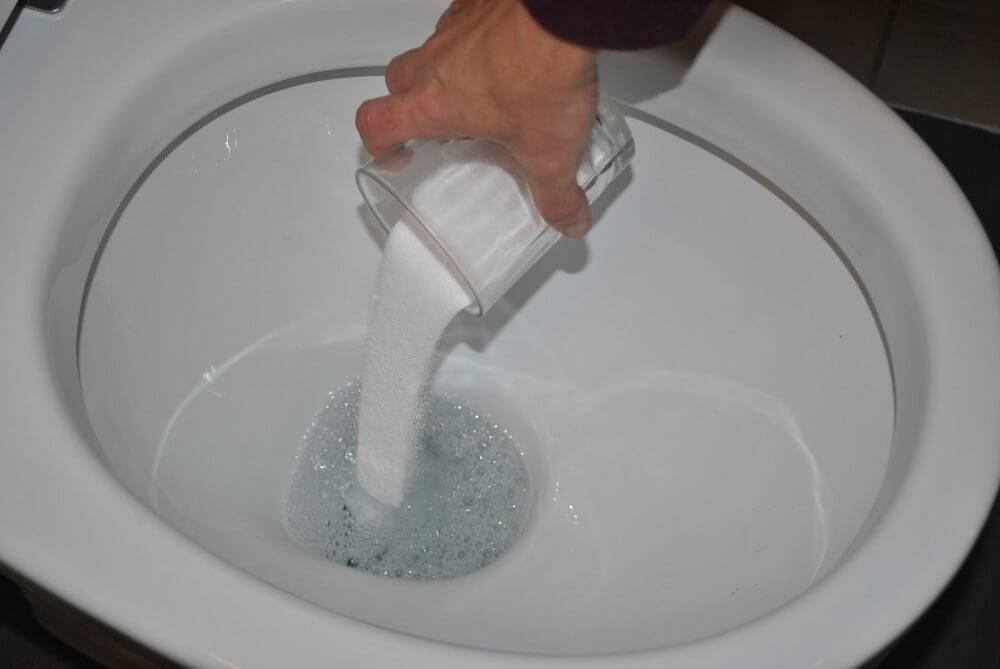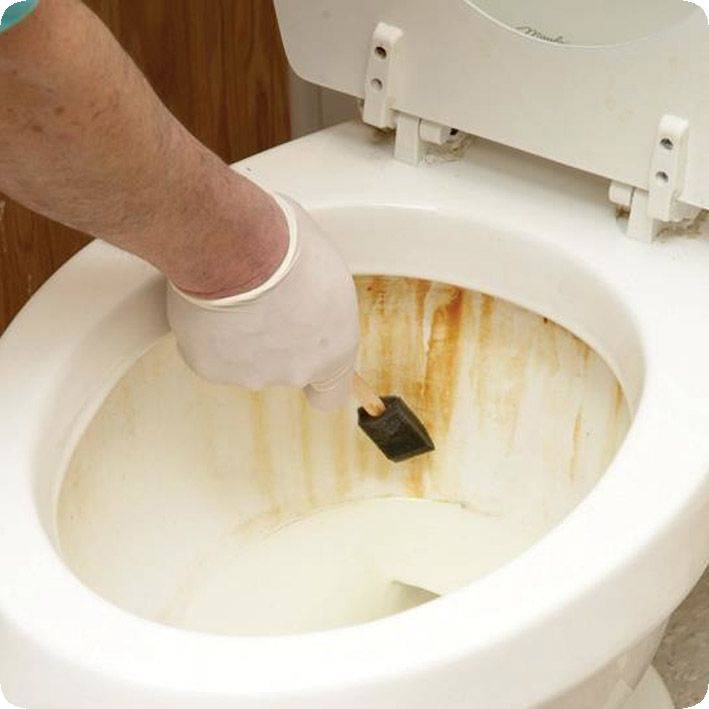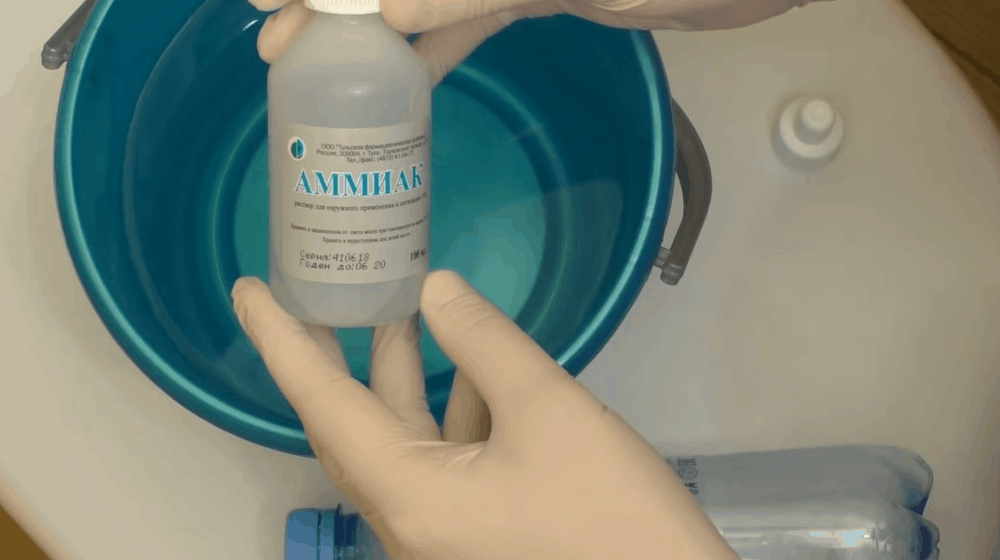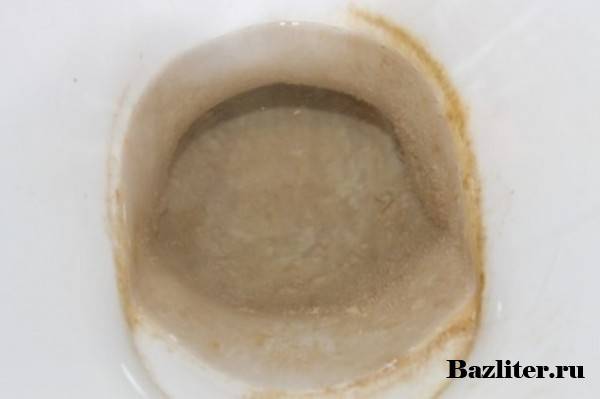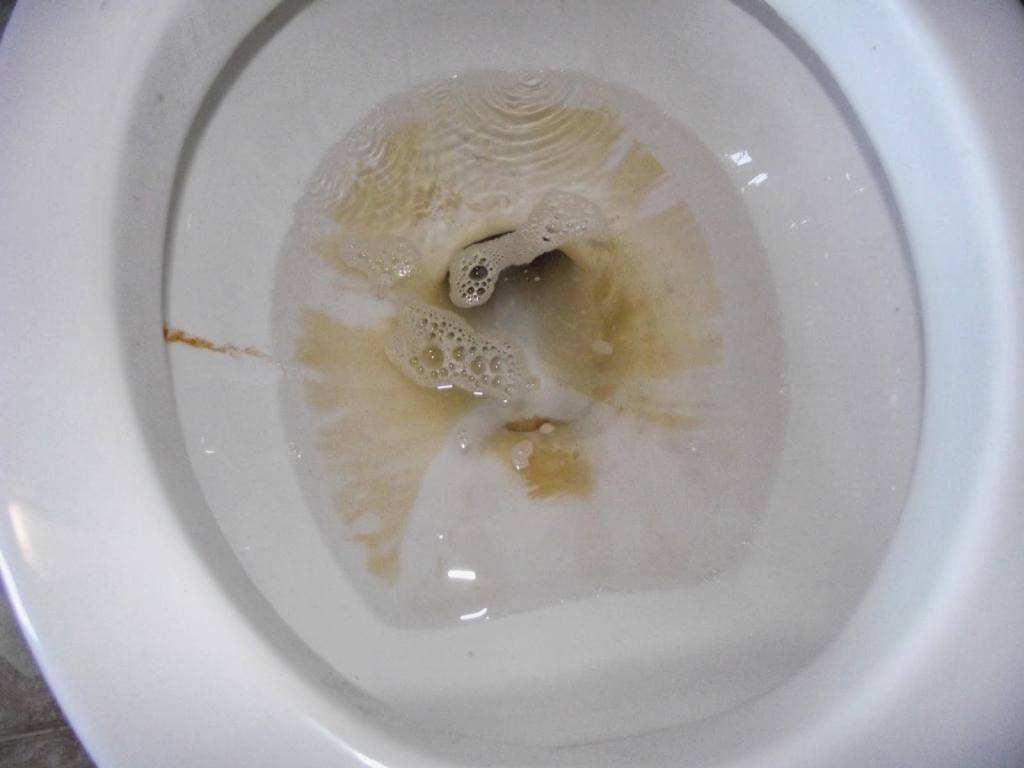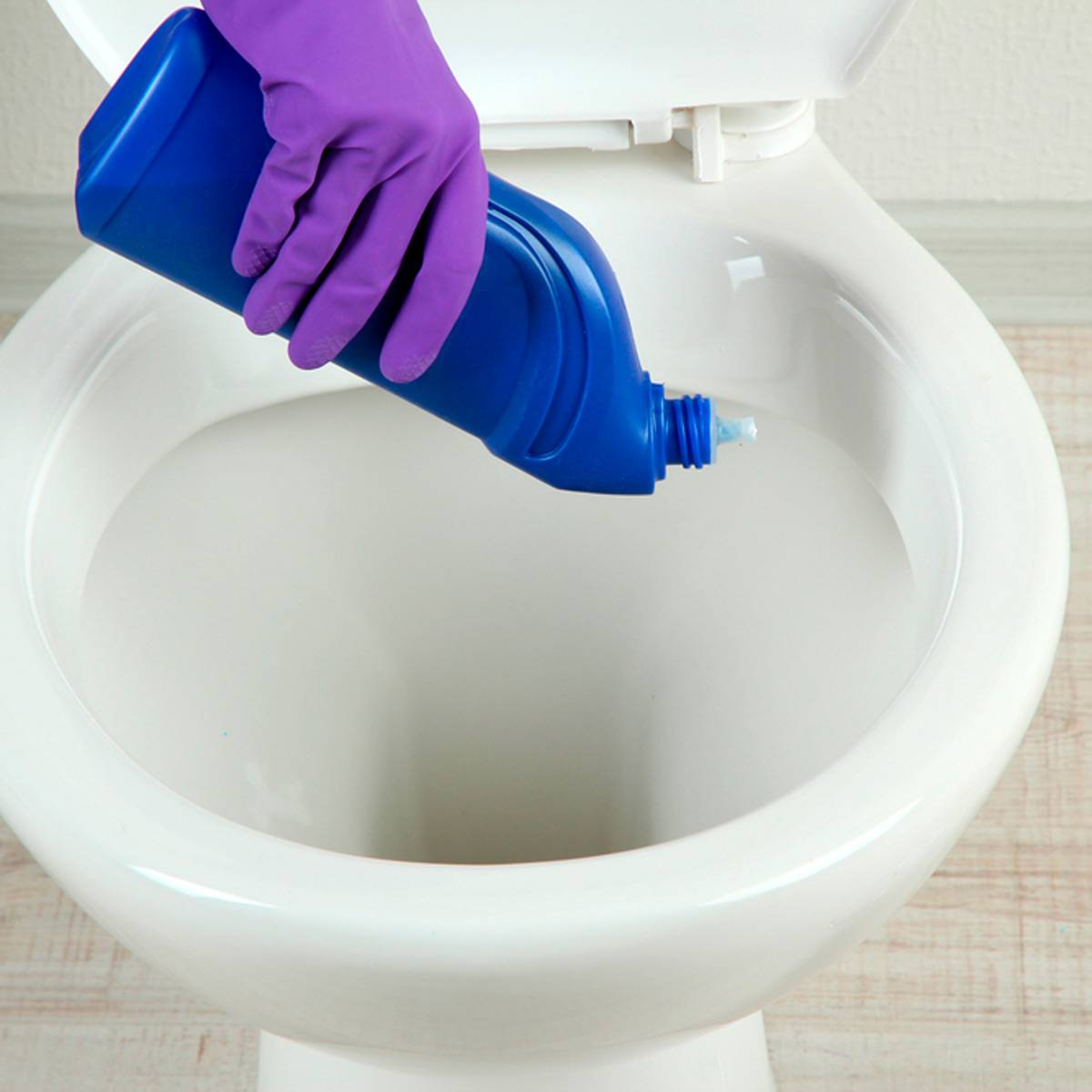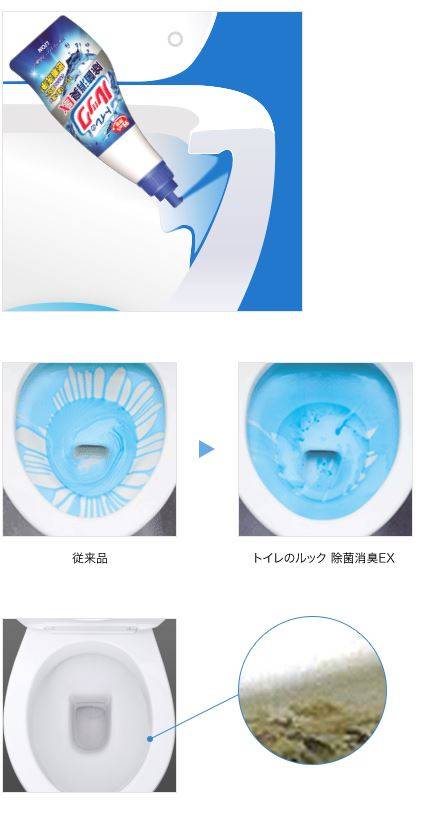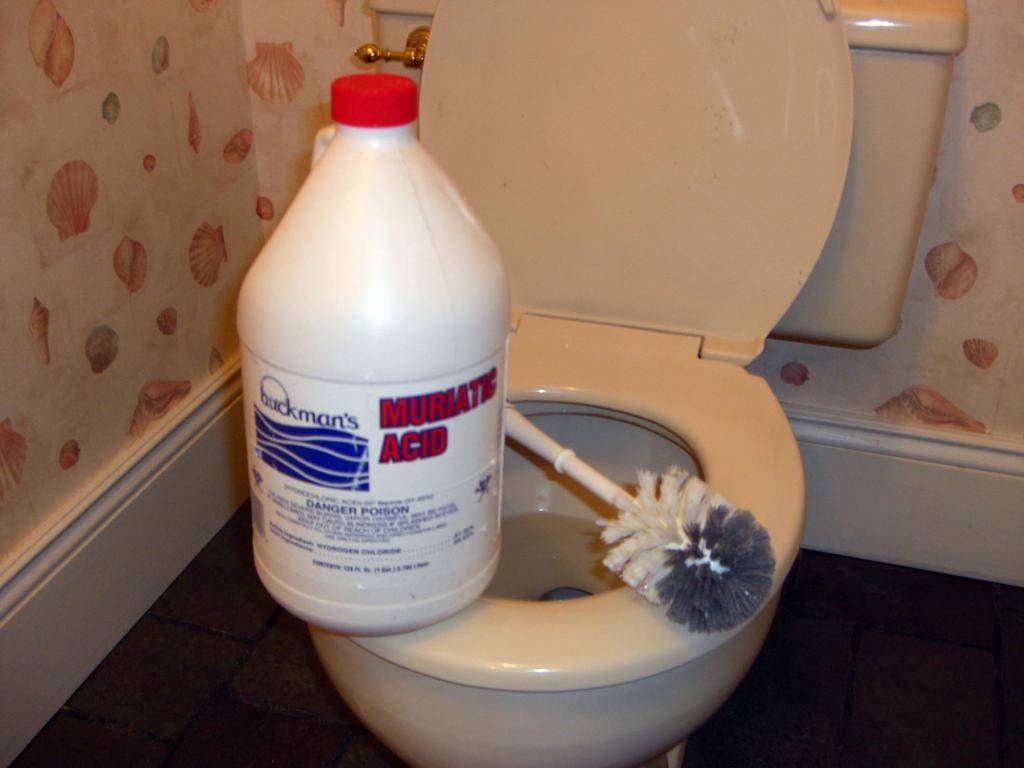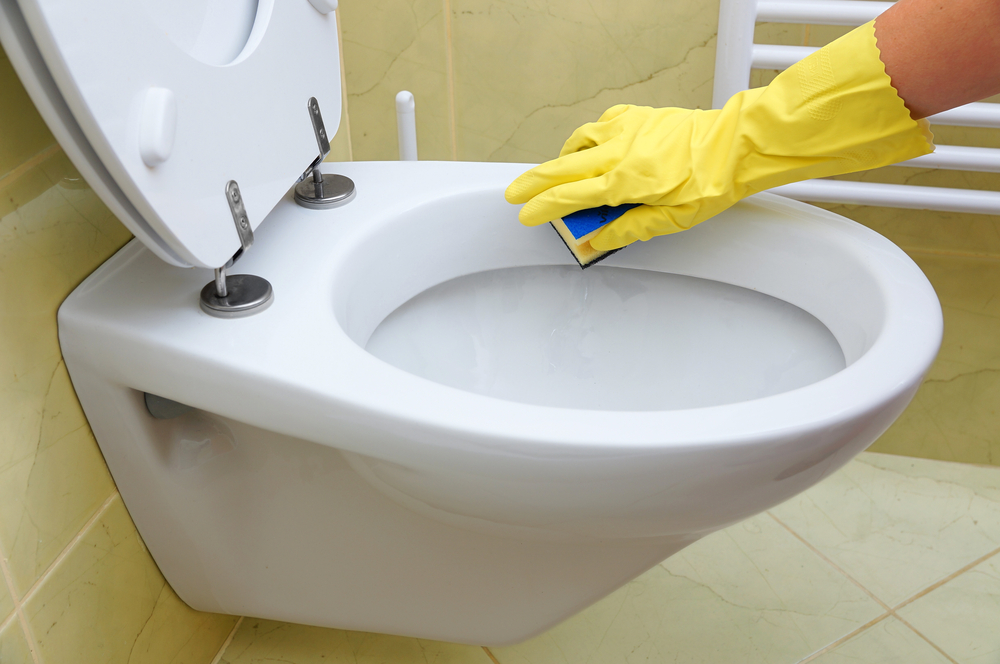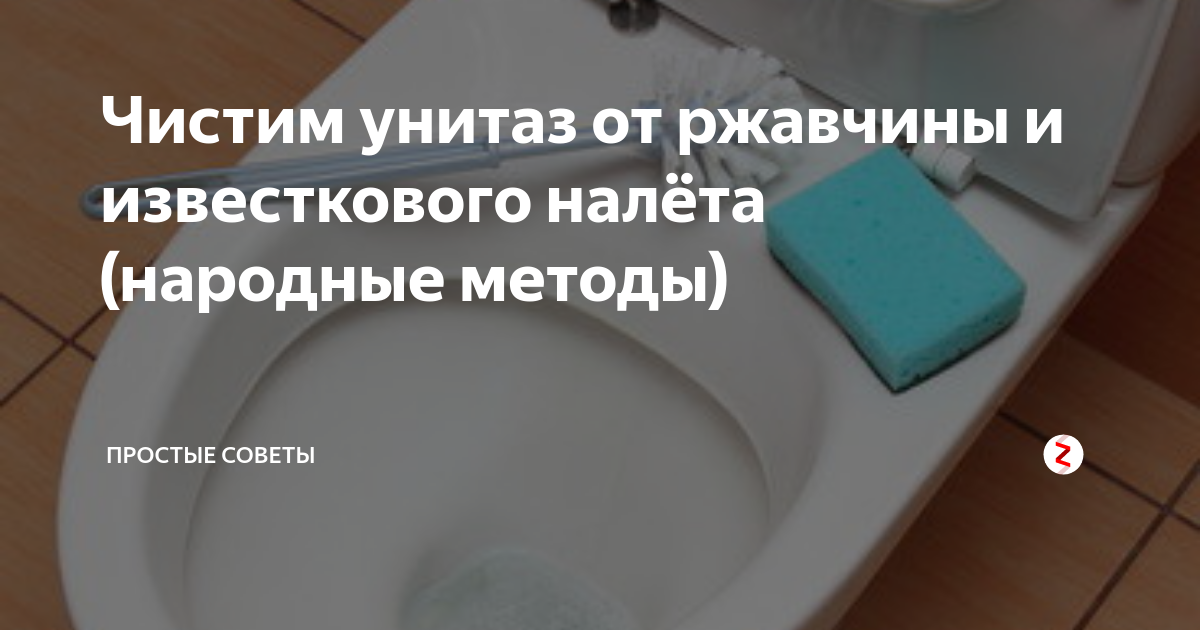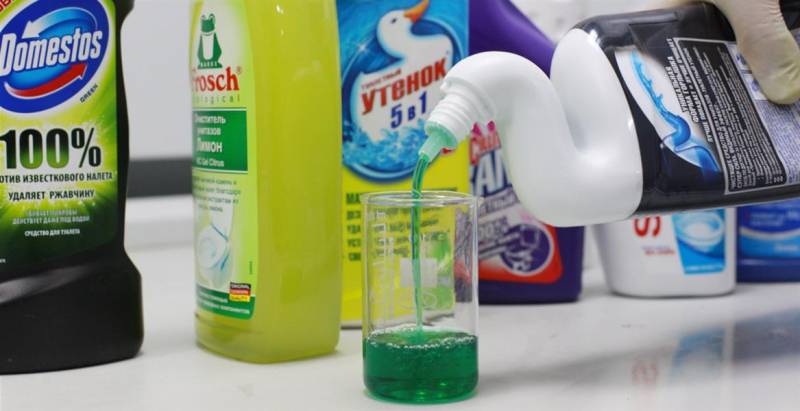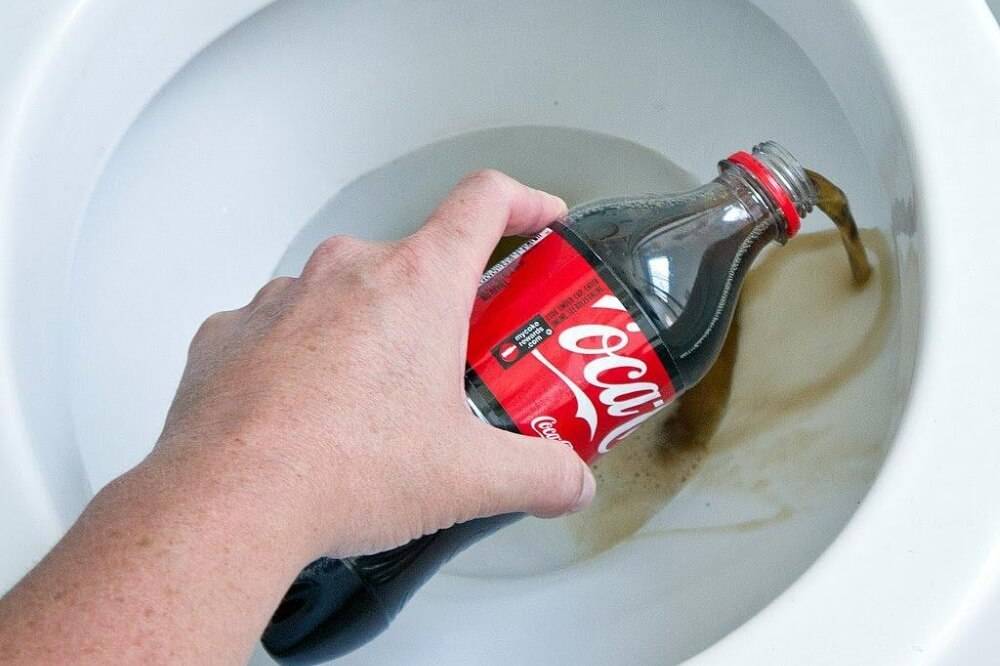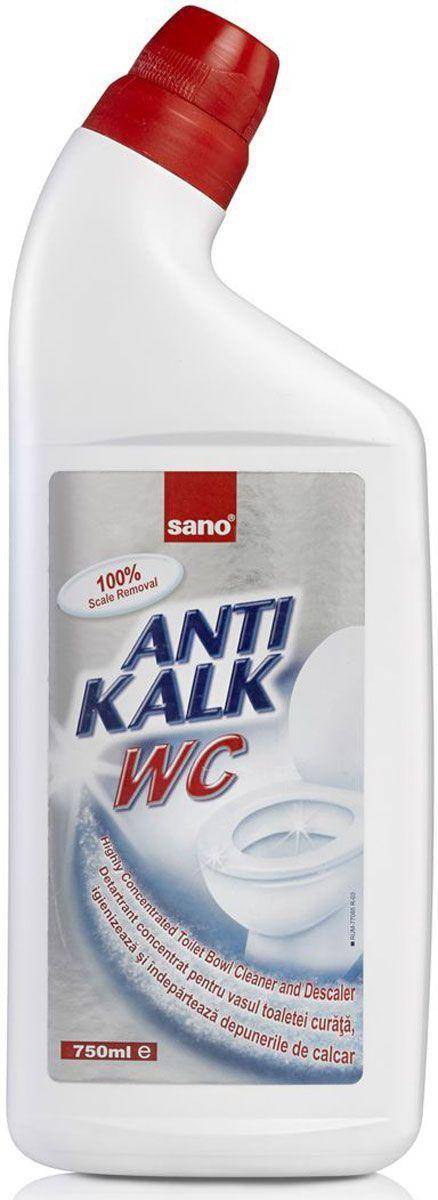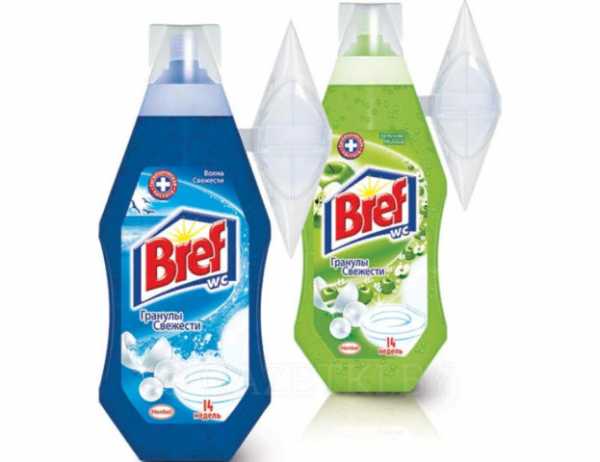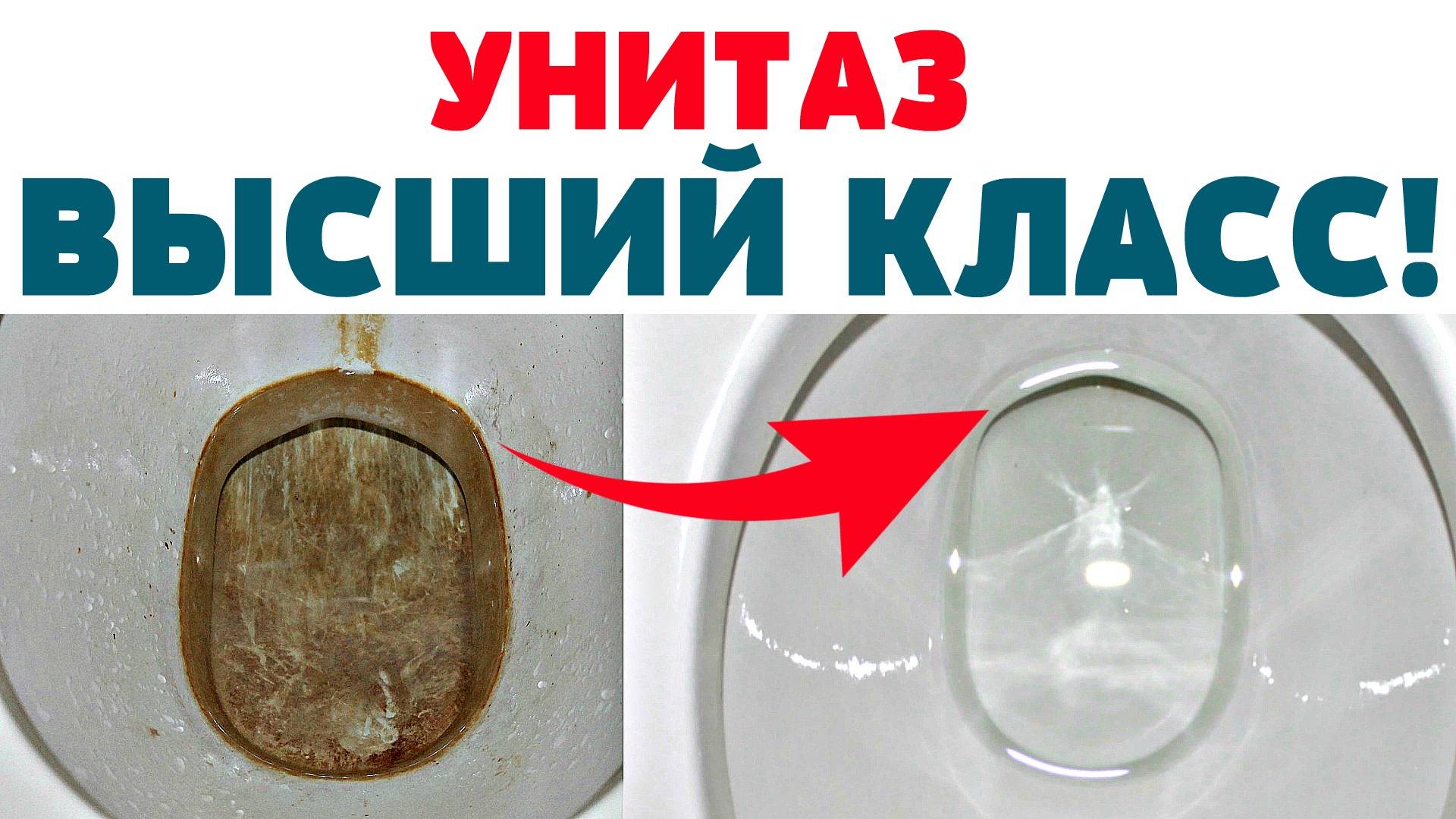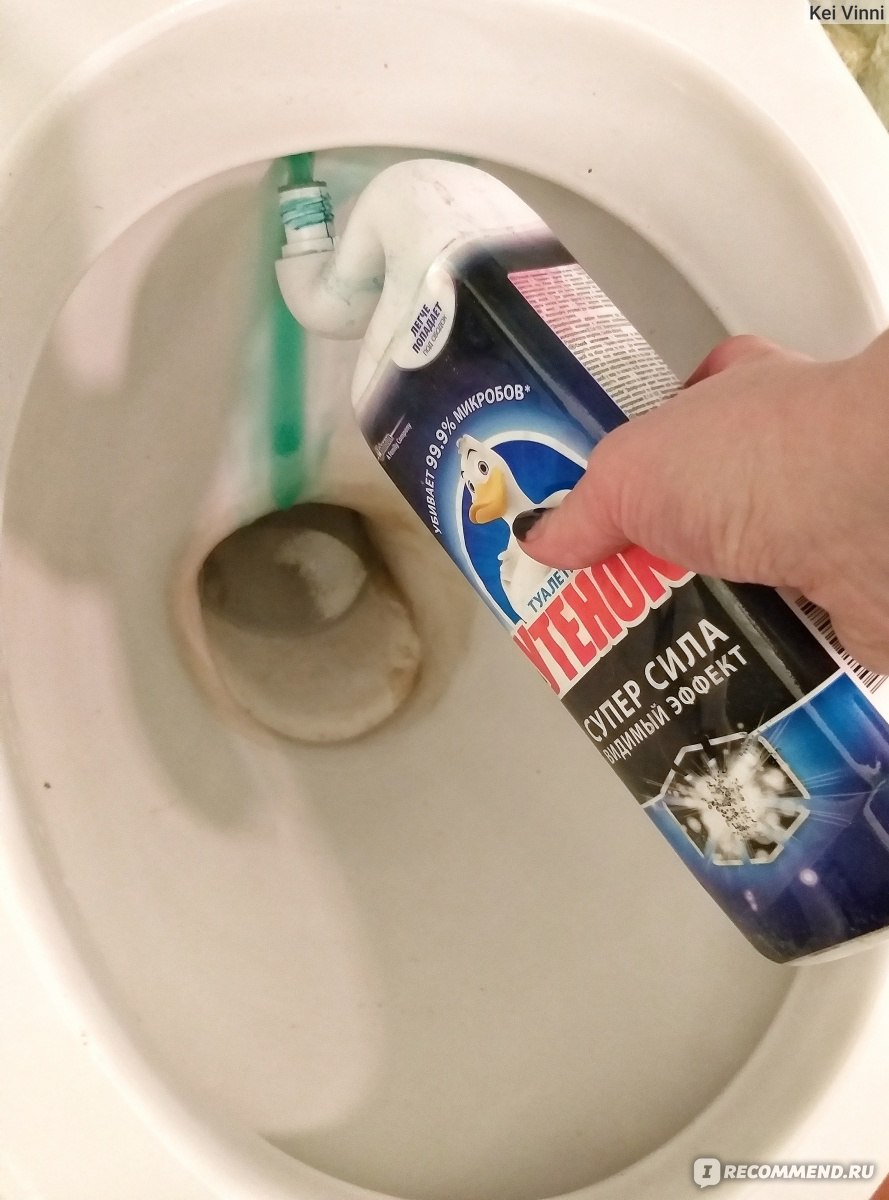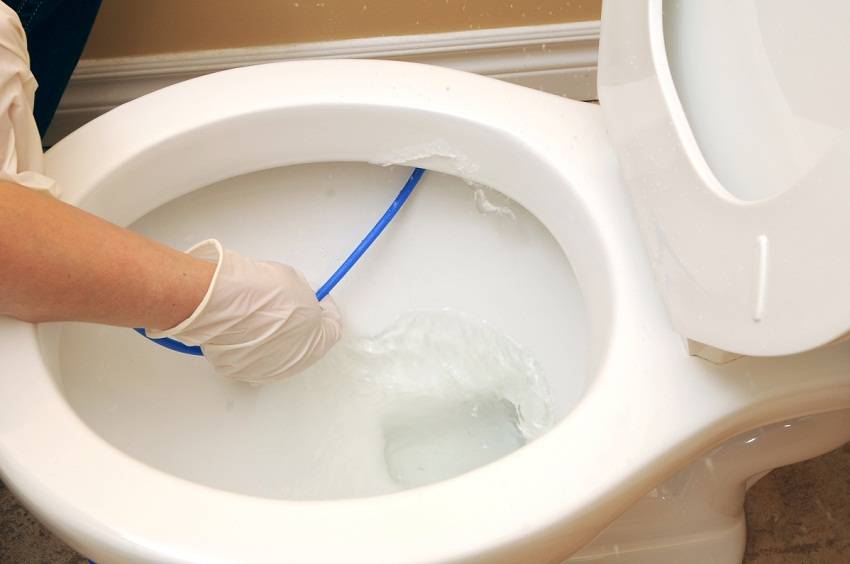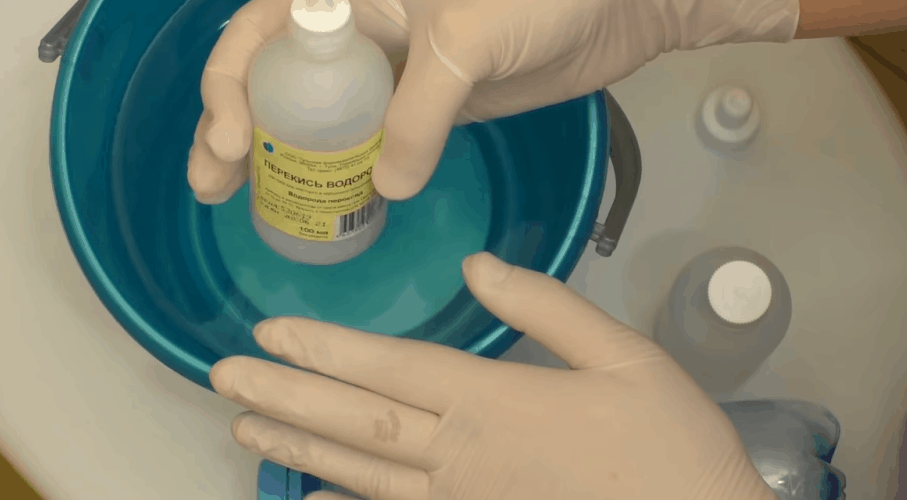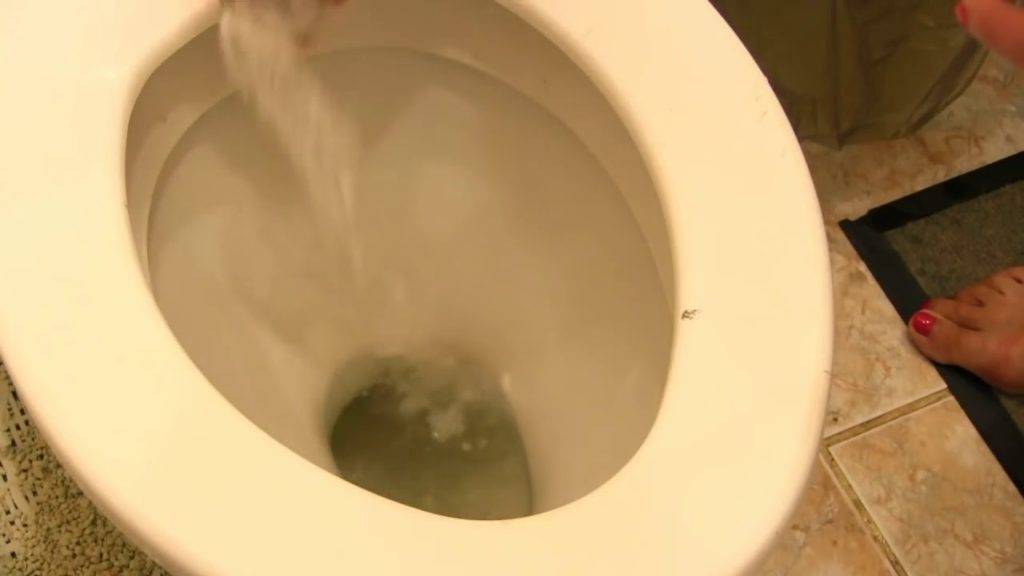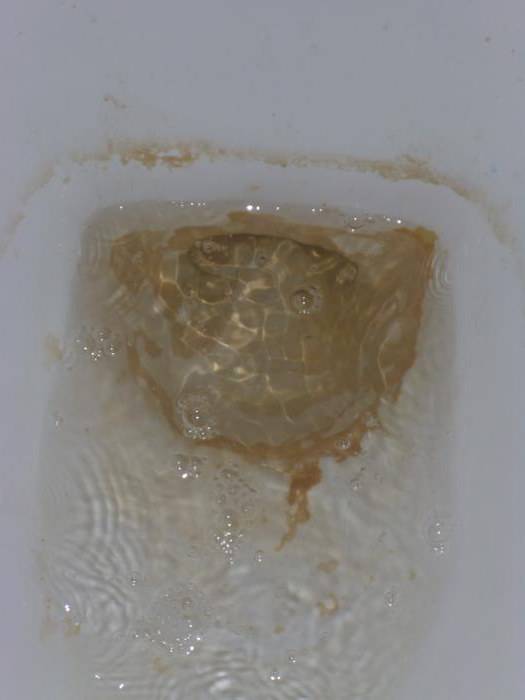Strong acids
If too much mineral deposits have accumulated on the walls of the toilet, then most cleaning products will not cope with this problem. All that remains is to use acids that effectively corrode any pollution. However, these products spoil the plumbing coating, so they should be used very rarely.
Table 2. Potent acids
Title, illustration
Description
Orthophosphoric acid
This substance copes with mineral deposits in 8-12 minutes. Apply generously to the surface of the dirt and then rinse with water. The main advantage is that the acid does not destroy polymer surfaces, which means it can be used in the presence of plastic sewer pipes.
In addition, the acid effectively copes with rusty smudges, which often accumulate in the cistern.
You will need to pour 95 grams of acid there, wait a few minutes, and then rinse off the water.
Concentrated hydrochloric acid (more than 30%)
It is one of the most dangerous acids and should be used with caution. First, you need to open the windows in the room and wear rubber gloves
Secondly, keep this product on the surface for no longer than 10 minutes, otherwise it will irrevocably ruin the coating. In addition, it should only be used with metal sewer pipes.
Oxalic acid
This acid is sold in packages in the form of a light powder. The average exposure time of such a remedy is 50-60 minutes.
You can fill up the acid both in pure form and with water. After completing the cleaning, you will need to thoroughly rinse the toilet.
Electrolyte
Use this acid carefully and for a short time - no more than 8-10 minutes. It should be understood that the main component of the product is caustic sulfuric acid, which, together with deposits and plaque, negatively affects the plumbing coating.
Toilet limescale removers
 Liquid toilet cleaners are easy to use.
Liquid toilet cleaners are easy to use.
Our apartments are supplied with not very clean water. Plaque settling on the toilet bowl may indicate that the water in the water supply system is very hard or rust appears on the pipes.
Most often, in the fight against limescale, special means are used, a huge range of which is presented in hardware stores. Cleaning compositions are of the following types:
- Abrasive detergents (powders). It is quite difficult to clean the toilet bowl with them until it shines; you will have to spend a lot of time and effort on it. In addition, solid particles of the substance damage the enameled surface of the plumbing, it will become rough, and plaque will appear much faster. It is better to use powders less often or refuse to use them.
- Alkali based detergents. Such a composition will remove urinary calculus deposits if they have appeared recently; it is more difficult for an alkaline agent to dissolve old dirt. To clean the surface, the substance must be applied for a long time, preferably overnight, then the effect will be much better.
- Acidic formulations. Such a product is more effective than alkali or abrasive, and copes well even with old plaque. And you can also use acids in their pure form, for example, hydrochloric and orthophosphoric. They are great for removing the most stubborn limescale on the toilet. Remember that hydrochloric acid destroys plastic and rubber, and if the sewer pipes in your house are made of these materials, this method should be abandoned.
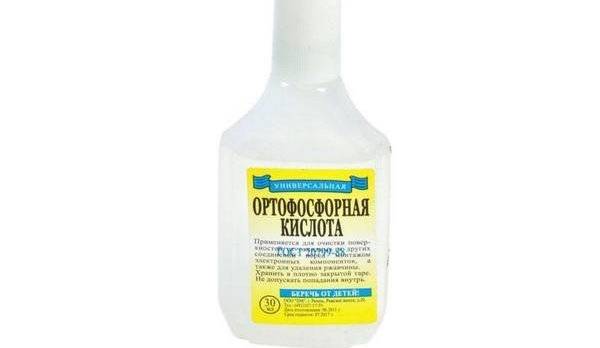 Acid is the most aggressive, but also the most effective anti-limescale remedy.
Acid is the most aggressive, but also the most effective anti-limescale remedy.
For effective cleaning, you will need to pour 1/2 cup acid down the toilet and wait 10 minutes, then flush the chemical with water from the cistern.
Wear gloves before using acids to remove limescale deposits from the toilet. This will protect you from chemical burns.
Chlorine based products. Such compositions do an excellent job not only with plaque on the walls of the toilet bowl, but also disinfect the surface. The action of the substance is quite gentle, it does not spoil the enamel, after chlorine-based products no roughness and scratches are formed. But they have one significant drawback - a very sharp and heavy smell, after such treatment it is almost impossible to go to the toilet for some time, you have to wait until the room is ventilated, and when cleaning it is better to protect the respiratory organs with a medical mask.
Liquid battery electrolyte. It is an excellent remedy for all kinds of deposits. It is a mixture made from distilled water and sulfuric acid. In order to get rid of deposits with it, it is enough to apply the product to the surface and hold for 10 minutes. Then you need to clean the toilet with a brush and rinse with water
But it should be remembered that sulfuric acid is a very caustic substance, therefore, it is worth using this method of cleaning only in extreme cases, and at the same time observe all possible precautions.
When working with purchased products, it is very important to follow the instructions for use. Otherwise, you risk damaging the enamelled surface of the plumbing.
Cleaning the toilet with folk remedies
If it is not possible to use store-bought household chemicals, they can be replaced with improvised means. According to the reviews of housewives, folk councils are equally effective in bleaching and disinfecting the toilet. Let's consider the most popular ones.
Alkali
Recently, housewives have begun to actively use caustic soda. Lye is the best way to clean the toilet bowl from urinary stones and grease. Before you start cleaning the toilet, be sure to wear heavy rubber gloves.
Algorithm for cleaning the toilet bowl with alkali:
- Remove the liquid from the toilet completely. In the absence of a special device, simply scoop up the water.
- Pour the diluted alkali into the container, cover with a lid for 3-4 hours.
- Brush contaminated areas.
- Rinse with water several times to remove any remaining alkali and dirt.
Lemon acid
This tool removes any impurities, including urinary stones. To clean the toilet, three tablespoons of the substance are enough.
Algorithm for using citric acid:
- Empty the entire dose of acid down the toilet.
- Cover with a lid for 4 hours.
- After this time, open the lid and flush the toilet with water several times.
- If there are small, dirty areas, scrub them down a little with a brush.
If the dirt has strongly eaten into the surface, repeat the procedure with acid several times in a row. Use this effective remedy once a month to keep your plumbing clean.
Vinegar
According to some consumers, a vinegar mixture is the best way to keep the toilet clean. The essence is prepared according to the following recipe:
- Add a teaspoon of iodine to 200 ml of vinegar, heat to 50 degrees. It is better to cover the container with vinegar with a lid so that a strong smell does not spread through the room;
- Pour the heated solution into the toilet, previously cleaned with baking soda;
- Place the lid on the toilet for 10-12 hours.
After the specified time has elapsed, rinse the bathroom with copious amounts of water, wiping at the same time with a toilet brush or a soft brush.
Chlorine
The best toilet cleaner to remove stones and bacteria is regular bleach.This substance has a high whitening effect, but in order for it to overcome the urinary stone, to clean it from the stone, you need to work a little more on problem areas with a brush or a special pumice stone on a stick.
Acid solutions of different concentrations
Folk remedies are suitable if the dirt has not accumulated for years. The old technique uses strong acids to remove thick plaque.
Oxalic acid
Oxalic acid is considered a technical agent that is used in the preparation of surfaces before applying the enamel. Apply dry powder or dilute with water. The finished mixture is used to clean the toilet bowl from both urinary stones and rust. The product is toxic, therefore it is impossible to work with it without a respirator and hand protection.
Orthophosphoric acid
Phosphoric acid, a component of the composition of Coca-Cola, can be used in apartments with plastic pipes: its action will not disrupt the operation of the sewer system. But it will cope with the removal of rust successfully. The exposure time is 15-20 minutes. Operating procedure:
- 100 g of the substance is placed in a tank;
- 100g is poured into the toilet;
- After 15 minutes, the inner walls are treated with a brush;
- Wash off the solution;
- Refill the reservoir and rinse.
Hydrochloric acid
Unlike the previous version, hydrochloric acid is not suitable for plastic pipes, the solution will damage the system.
200 g of the substance is placed in a tank and smeared with a brush inside the mixture. The toilet lid is closed after the procedure. The period of exposure to the base is about 10-15 minutes. It is necessary to rinse the component well and ventilate the room.
Home remedies overview
Regular home care can help prevent plaque build-up, but if trouble does occur, try the following products and formulations:
- Oxalic acid. Quickly copes with complex tasks - dissolves water stone in the toilet. The instruction warns of the pronounced causticity of the substance; you can work with it in thick gloves, a respirator and goggles.
- White. The liquid product is an alternative to chlorine. Apply to toilet bowl. It works for several hours, after which the bottom and walls shine.
- Lemon acid. A gentle way for tough stains. Removes plaque of various densities, cleans the cement joint between tiles from blackness. The teapot with a coating on the spirals and walls will also help freshen up.
- Vinegar. Table acid dissolves contamination and kills dangerous pests. If the washing machine is covered with lime, pour it into the compartment instead of powder, turn it on to the usual washing program.
Removing limescale with home remedies is safe for coatings and family health.
How to clean plaque with bleach?
The most widespread and affordable means containing chlorine in its composition is "Whiteness". But besides its whitening and cleansing properties, this liquid is also famous for its disinfecting effect. Thanks to this, it is not easy to clean your sanitary ware, but also to simultaneously remove various microbes, bacteria and E. coli. But, there are also disadvantages to this drug: as proved by scientists, chlorine has a negative effect on the functioning of the female body. If this fact is not an obstacle on the way to achieving real cleanliness of the home toilet, then it is recommended:
- Scoop out all the water from the toilet and dry all the walls of its inner cavity.
- Pour whiteness on all problem areas inside the toilet, without touching its rim.
- Then you should close the lid and leave the whiteness to dissolve all lime deposits for 45-50 minutes.
- After that, you should wash all problem areas using a brush, and rinse off the contamination 2-3 times with clean water.
Which toilet cleaner is better to buy
When choosing a toilet cleaner, you need to determine what kind of contamination occurs on plumbing most often. It can be urinary calculus, calcareous or rusty deposits, black spots in the mouth of the knee.
To combat this or that problem, you need to choose a tool with the appropriate composition:
- The high concentration of surfactants is responsible for removing common stains.
- Acids fight urolithiasis and lime deposits.
- Alkalis are designed to dissolve fats, organic residues, and remove rusty streaks.
- Chlorine-containing substances eliminate unpleasant odors and disinfect the surface.
Aromatic additives are optional in cleaning products, but they create a feeling of cleanliness in the toilet and also fight well against the smell of sewers.
Traditional methods of eliminating pollution
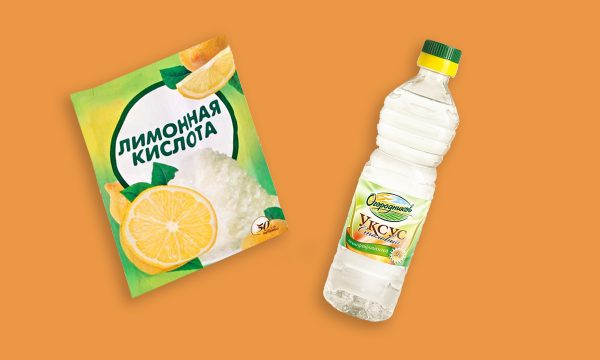 Citric acid and vinegar are great not only for cleaning the toilet, but also for the bathtub.
Citric acid and vinegar are great not only for cleaning the toilet, but also for the bathtub.
Quite often, not household chemicals are used to clean the toilet, but folk methods. Below are the funds that are recognized as the most effective.
Lemon acid
To prepare the cleansing mixture, you will need:
- 2 sachets of citric acid;
- brush or brush;
- gloves.
Sequencing:
- Scoop water out of the toilet bowl.
- Pour the contents of the bags over the entire surface, not forgetting about hard-to-reach places (for example, under the rim).
- Lower the lid and leave for 3-4 hours. The citric acid should be absorbed into the dirt.
- Using a brush or a brush, thoroughly wash the toilet from plaque and urinary calculus.
The procedure can be repeated if necessary.
Citric acid and vinegar
To prepare the cleanser you will need:
- 2-3 sachets of citric acid;
- ½ cup 9% vinegar;
- brush or brush;
- spray;
- gloves.
The algorithm of actions is as follows:
Scoop water out of the toilet.
Citric acid is poured over the entire surface of the bowl.
Close the toilet lid, let it brew for 3-4 hours.
Using a spray bottle, vinegar is sprayed in places of strong dirt, right on top of citric acid
As a result, a chemical reaction begins.
After a few minutes, when the mixture stops hissing and bubbling, gently clean it off along with the plaque with a brush or brush. The remains are washed off with warm water.
Soda
To prepare the cleanser you will need:
- baking soda and soda ash;
- brush;
- gloves.
The cleaning process is as follows:
- Baking soda and soda ash in a 1: 1 ratio are poured into the toilet.
- Lower the lid and leave overnight.
- In the morning, remove dirt with a brush.
Professional remedies
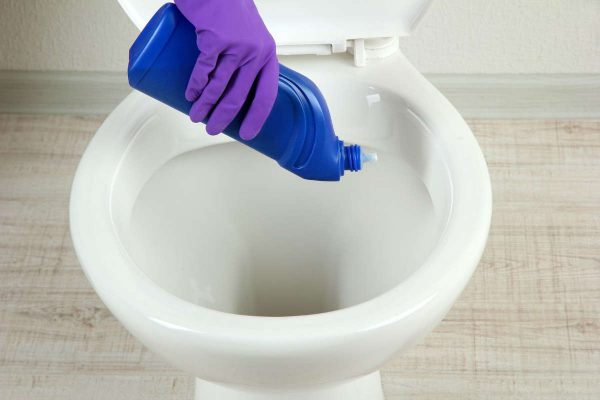 It is recommended to use gel products more often, as abrasives can cause cracks in the toilet
It is recommended to use gel products more often, as abrasives can cause cracks in the toilet
There are many cleaning products on the household chemicals market today that do an excellent job of removing limescale or rust.
These include:
- Cillit Bang;
- Domestos;
- "Dressing Duck";
- "Sanox";
- Sanfor.
Recommendations for the use of each of the listed products can be found on the packaging.
What tools should I use to clean the toilet?
The following household appliances are commonly used to clean plumbing:
- brush;
- a special sponge with a long handle;
- a cloth made of natural textiles.
In the case of choosing a brush, it must be borne in mind that it should not be too hard or iron, otherwise the surface of the toilet bowl walls will quickly be scratched and become unusable. Use a long-handled sponge to apply detergents to stones and plaque. At the end of the procedure, you must carefully wipe the walls with a cloth.
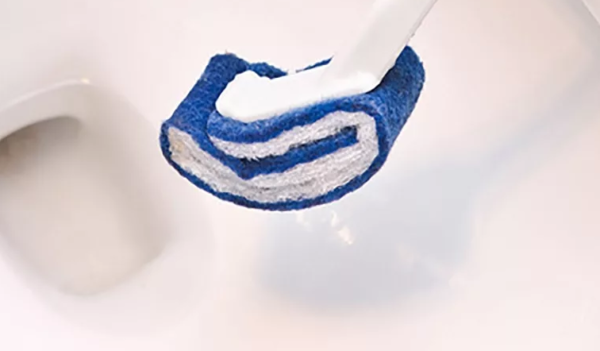 Sponge on an outstretched handle
Sponge on an outstretched handle
It should be borne in mind that when using any cleaning agents, you must carefully study their composition and instructions. In addition, it is best not to use them at the same time - otherwise, an unpredictable chemical reaction may occur.
In addition, you should not keep any product (even based on natural ingredients) for longer than the prescribed time, because some substances contribute to the destruction of the toilet bowl coating.
How to avoid lime formation
Preventing limescale deposits is better than removing them.To avoid layering, follow these steps:
- Clean with special products 1-2 times a week;
- after using the toilet, clean the remains with a brush and spill water;
- repair plumbing in time to avoid smudges;
- use special nozzles and anti-plaque tablets in the toilet;
- wipe the surfaces with a damp cloth and citric acid.
Regular maintenance of tiles and plumbing fixtures will preserve their aesthetic appearance for a long time. Remove any stain immediately before it is embedded in the structure. Deceleration leads to unpleasant consequences, makes us look for effective methods of dealing with complex pollution. It is better to prevent the problem than to look for a method to deal with it later. Cleanliness is a guarantee of health in the family and comfort in the house.
The article has been verified by the editorial staff.
Taking tough measures
Difficult contaminants are removed with concentrated acids. When handling chemicals at home, use rubber gloves, a protective gown, or a plastic apron and respirator. Do not close the doors to the toilet, and after processing, thoroughly rinse the toilet, thoroughly ventilate the room as a whole.
Dry oxalic acid. The technical acid is sold in powder form. It is applied to a piece of cloth and wiped off the dirt by hand.
It is necessary to wash the toilet in this way with the observance of precautions.
Electrolyte for acid batteries. This substance helps to get rid of stubborn plaque
Contains concentrated acid. Cannot be used if the sewer pipes are made of plastic. Poured into the toilet, after half an hour or an hour washed off with water.
Hydrochloric acid. Sold in plumbing shops, usually used to clean water heaters in gas boilers, water heaters, etc. The principle is the same as with electrolyte. With its help, you can get rid of all types of stone.
Iodine monochloride. A liquid product, you can buy it at veterinary pharmacies. Perfectly removes all types of stone. The solution is poured over the contaminated areas and almost immediately washed off with water - the product eats away lime deposits and rust within a few minutes. Cannot be used in homes where sewer pipes are made of cast iron. Also, iodine monochloride is aggressive to aluminum.
And finally, we note that it is too often undesirable to use potent agents - they spoil the surface of the plumbing, leaving microdamages on it. After washing off limescale and stone once, sanitize the toilet regularly. If there is poor water, install house filters or use special tablets to prevent plaque build-up in the cistern and toilet.
How to clean a toilet bowl to white
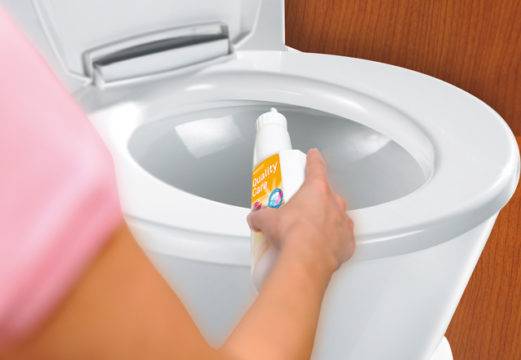
The cleaning agent must be selected according to the degree of soiling. The choice of options is huge. In addition to many folk methods, the store offers a large assortment of products that effectively deal with various types of dirt. The presence of an ordinary brush and regular sanitization with regular use gives a remarkable effect. With normal water hardness, it is enough to clean the toilet - once a week.
Folk remedies
If you are determined to clean up all the dirt in the bathroom, then you don't have to buy expensive products. Many solutions from the store have a high price, but the effect is absolutely inadequate. Proven folk remedies will help to avoid unnecessary spending. The ingredients for these recipes are inexpensive and can be found in every home.
It is extremely difficult to clean the walls of the toilet bowl under water, therefore, before starting work, you should remove all the water from the tank and drain hole. To do this, turn off the tap on the pipe and press the drain. You can scoop up the water inside the toilet with a small plastic cup or ladle.
Soda
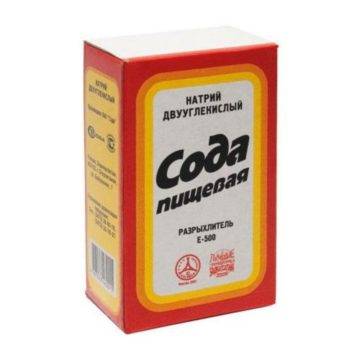
Light dirt can be removed with regular baking soda. This is not difficult.This requires:
- Apply baking soda to a dirty surface.
- Leave it on for as long as possible, preferably overnight.
- Wash off.
Soda and vinegar
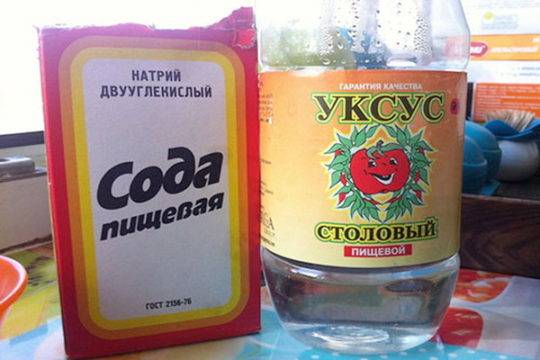
This recipe is not much different from the previous one. In this case, the baking soda must be poured with vinegar before rinsing with water. After that, we are waiting for the completion of the hiss and everything is mine.
Vinegar

It is possible to get rid of limescale and urinary stones with the help of ordinary table vinegar.
This is easy to do:
- Heat slightly 250 ml of vinegar.
- Add a pinch of salt and stir.
- Apply the solution to the contaminated walls and leave overnight.
- In the morning just wash off.
Lemon acid
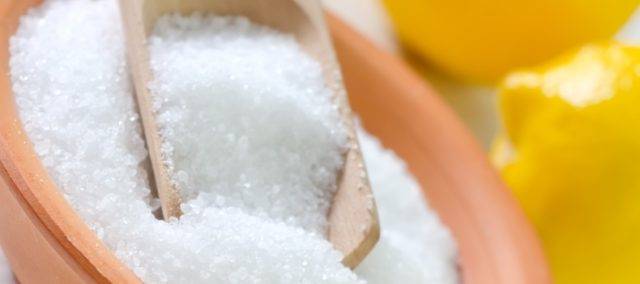
For high-quality cleaning, you will need 3 packets of citric acid. 1 sachet must be poured into the waste tank, and 2 poured into water. After that, we leave for 4-5 hours. When the exposure time is over, clean the surface of the toilet bowl with a brush and rinse 2-3 times. If this was not enough, then repeat the processing again. The more contamination, the more citric acid will have to be used.
Carbonated drinks
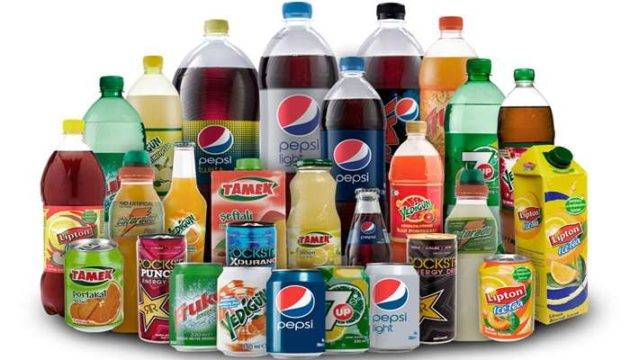
Cleaning plumbing fixtures with soda is another easy and harmless method. You need to buy 3-4 liters of a drink (Coca-Cola, Mirinda, Sprite, etc. work well) and pour it down the toilet. Leave everything overnight. Highly carbonated drinks during exposure well soften urinary calculus and plaque. In the morning, all that remains is to clean it with a brush and rinse.
Chemicals
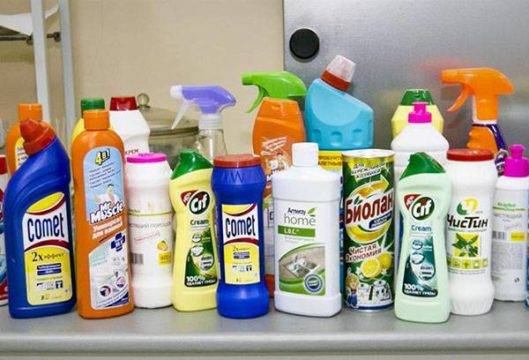
You can find various toilet cleaning products on the shelves in the store. Most of them need to be sprayed under the rim and left to act for 30-40 minutes. After that, the walls of the toilet bowl must be rubbed with a brush and press the flush button. In case of heavy dirt, the procedure is repeated. All cleaning products contain hydrochloric acid, which explains their effectiveness.
Many of the solutions are unsafe to use and contain strong acids. Such cleaners should only be used as a last resort, and when working, be sure to wear rubber gloves.
The most budgetary and powerful remedy is sodium hypochlorite (whiteness). It copes well with yellowness, bloom and rust. To do this, pour one bottle of the product into the toilet and distribute it along the walls. Leave on for 12 hours and then rinse.
Home remedies for limescale in the toilet
If you did not have special formulations, the question arises of how you can clean the toilet bowl from limescale using folk remedies. They are good because they are always at hand and are relatively inexpensive, and if the pollution is not very strong and old, they cope with them no worse than store products.
What else can you clean the toilet from limescale? Try one of these remedies.
Lemon acid

This substance effectively fights such deposits that have not yet had time to "firmly" settle on the walls of the toilet bowl.
In order to clean the toilet with citric acid, you need to take 3-4 sachets of powder, apply to the places that need to be cleaned, and leave for 5-6 hours, or even better, overnight. Then you need to carefully treat the surface with a brush and rinse the toilet, flushing the water several times. The procedure may have to be repeated to achieve the desired effect.
Acetic acid
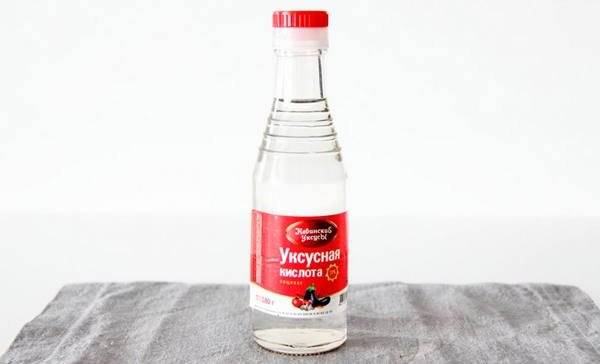
Vinegar works on the same principle as lemon. To clean the toilet bowl, you will need 250 grams of 9% of the composition, heated in a sealed container to 45-50 degrees. Pour the product down the toilet (add 3 teaspoons of baking soda to the vinegar for the best effect). Close the lid and leave overnight.
In the morning, clean the walls with a brush and rinse off the product by flushing the toilet several times.
Oxalic acid
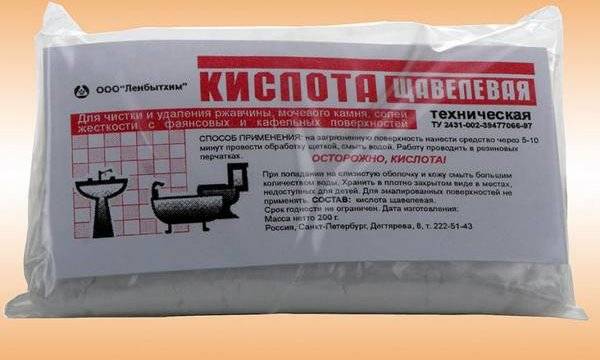
Recently, the remedy has been undeservedly forgotten, and it is less and less common to find it in hardware stores. However, oxalic acid is very good at fighting dirt and can easily bring back the whiteness of your toilet.
To remove plaque, apply generously to the toilet bowl, paying particular attention to the most contaminated areas. Then clean the toilet with a brush and rinse the acid with water
Baking soda
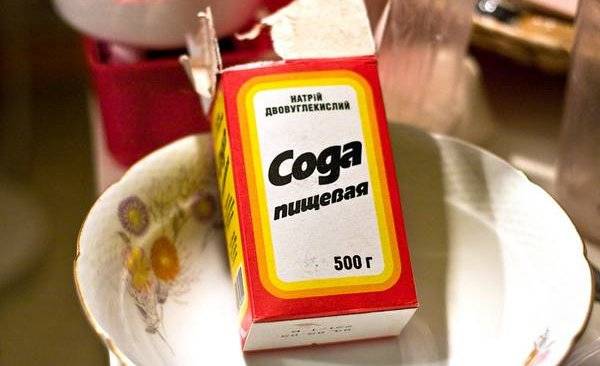
This product is in the kitchen of any housewife, it is rightfully considered a multifunctional tool. Soda perfectly dissolves mineral deposits, and also disinfects the surface, and it can be used both in pure form and as an enhancer of the action of citric and acetic acids.
To clean the walls of plaque with baking soda, you will need a whole packet of powder. Treat the toilet and let it sit overnight. In the morning, you only need to clean the walls with a brush and rinse off the baking soda with water.
Coca Cola

Coca-Cola will help get rid of plaque in the toilet, this is an unusual, but very effective method of cleansing. Soda contains acidity regulators such as citric and orthophosphoric acids, which explains the ability of cola to dissolve deposits.
How to get rid of plaque with this drink? Just pour it into the toilet overnight, it is better to take a 2 liter bottle. In the morning, rinse off the soda with water from the tank, if necessary, perform additional cleaning with a brush.
Cleaning the toilet is not the most enjoyable homework. But with regular maintenance, your plumbing will always remain perfectly clean and snow-white.
Read more:
- How to unclog a toilet bowl at home
- How to clean the toilet from urinary stones at home
- How to clean rust from a toilet
- The best toilet cleaners
How can you clean the toilet from limescale
Various minerals and lime, present in the water, are retained on the surface of the toilet in the form of a characteristic plaque. The hardness of the water determines the rate of its occurrence - the higher it is, the faster the layering occurs. The process can take from several weeks to months. Removing a thin layer of lime is possible with conventional toilet cleaners, which are applied to the entire inner surface of the toilet and left overnight, after which the plaque is cleaned off with a brush and washed off with water.
There are many special tools that can dissolve the layering - Domestos, Dressing Duck, Santry and others. Their cost varies from rather cheap to hard hitting on the pocket. With their help, plaque can be dissolved very quickly without time-consuming processes. Therefore, if you do not have allergies to these funds, then they can be used with a strong plaque that does not lend itself to folk remedies. For the use of factory products:
- read the instructions carefully;
- wear rubber gloves;
- remove all liquid from the toilet bowl drain, dry the surface with a rag;
- apply the product;
- leave it for the time specified in the instructions;
- clean the plaque with a brush;
- close the toilet lid and rinse off the product.
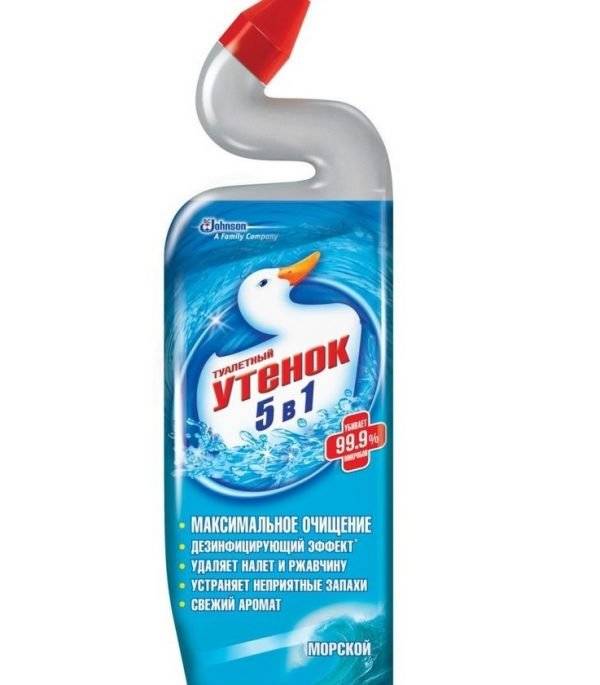
Dressing duck and other industrial products are good at removing plaque and removing unpleasant odors from the surface of the toilet
If you want the toilet to retain its original appearance for a long time, take preventive measures. They will help to avoid the occurrence of plaque. And if it appears, first try some proven folk remedies, including:
- baking soda;
- vinegar;
- lemon acid;
- Coca Cola;
- Whiteness, etc.
Getting ready to clean the toilet
In order to remove mineral deposits from the walls of the toilet bowl and drain, you will need to prepare the following:
- thick gloves;
- devices for removing water (ladle, special vacuum filler);
- special sponges, brushes, brushes.
Before starting the procedure for cleaning the toilet, turn off the tap to exclude the flow of tap water. After that, you will need to remove the liquid from the toilet using any container or volumetric syringe. This must be done carefully, and then wipe the surface dry with napkins. Such measures can improve the effectiveness of the use of cleaning components.
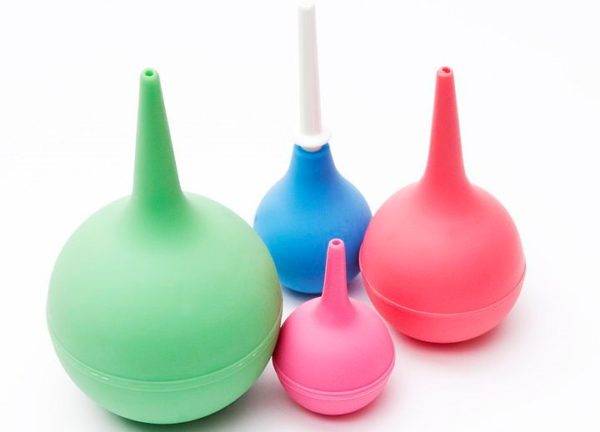 You will need to remove water from the drain hole - you can pump it out with a large syringe
You will need to remove water from the drain hole - you can pump it out with a large syringe
It is imperative to wear tight gloves on your hands to protect the skin. When using some components, experts even advise covering your nose with a respirator and your eyes with glasses.
Toilet bowl cleaning
To understand how to still remove limescale on the toilet, it is important to know that all cleaning products are divided into three types:
- alkaline;
- abrasive;
- acidic.
Alkaline products are safe, odorless, but disinfectant. With their help, it is easy to remove limescale in the toilet and organic contamination. Sold in the form of a liquid, they fight well with surface contamination.
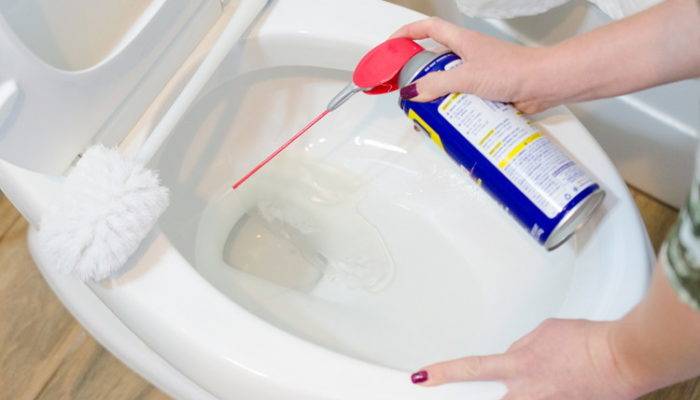
With the help of abrasives, that is, cleaning powders, you can clean both the toilet itself and the cistern
It is important to remember that powdered products are difficult to rinse off and can leave roughness on surfaces. Dirt will accumulate in them more often, so after cleaning the plumbing should be well rinsed with water.
And finally, acidic agents. These are serious cleaners that can remove obsolete limescale from plumbing. In the composition of such funds there is formic, phosphoric and hydrochloric acid. It is not difficult to guess that when using such means, it is imperative to use protective equipment: thick rubber gloves, a respirator and, preferably, glasses. After processing, the room must be well ventilated.
How to remove stubborn yellow plaque in the back of the toilet
Many housewives are tormented by the question of how to remove limescale in the depths of the plumbing? In fact, all the same tools will help as for cleaning plaque under the rim or in the tank. But there is a nuance, in order to remove the yellowness in the depth, you need to drain all the water and pour in a cleaning agent. This cleaning procedure is best done at night. In the evening, pour in the cleaning agent, and in the morning it is good to rub it with a brush and rinse off the product.
